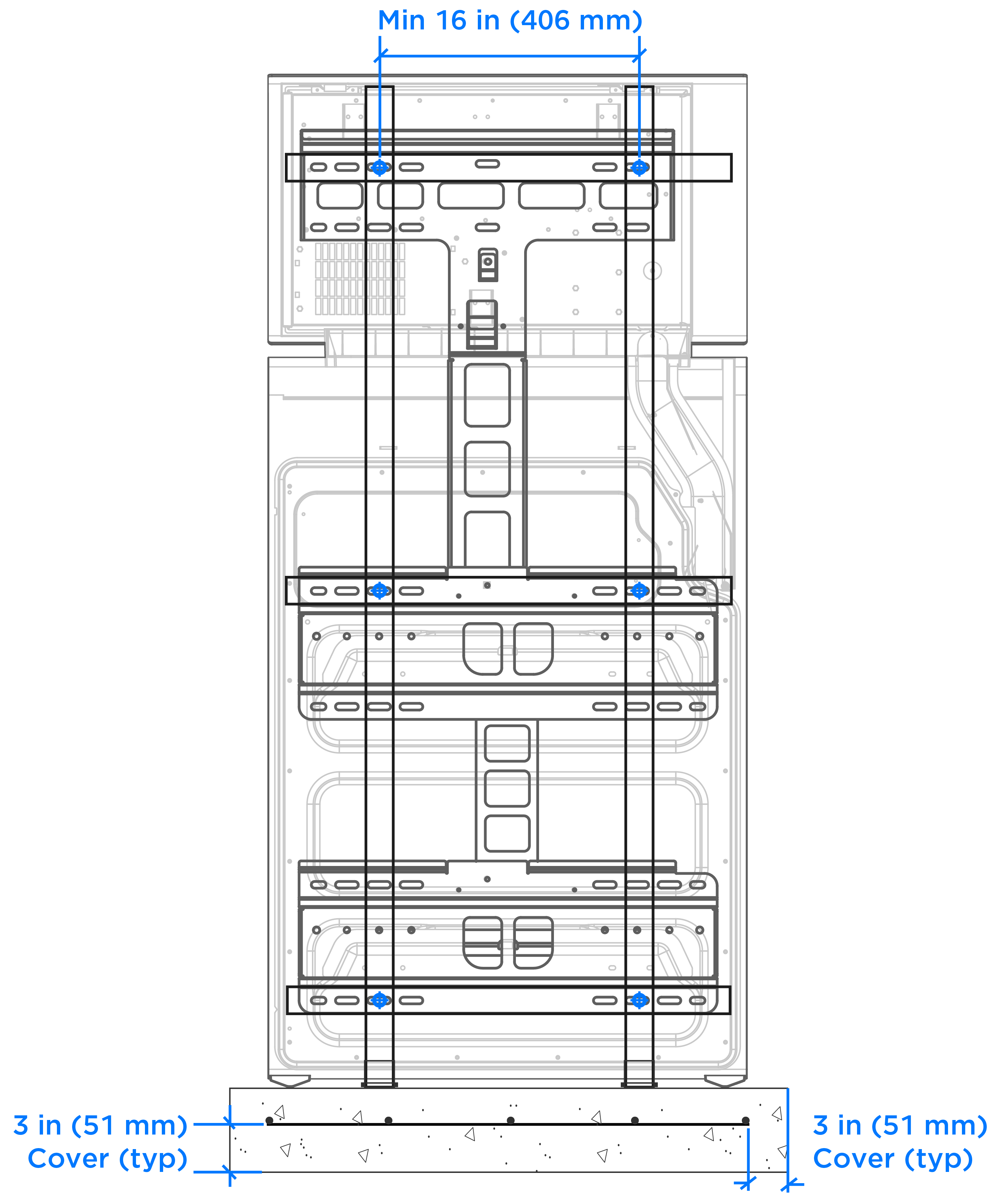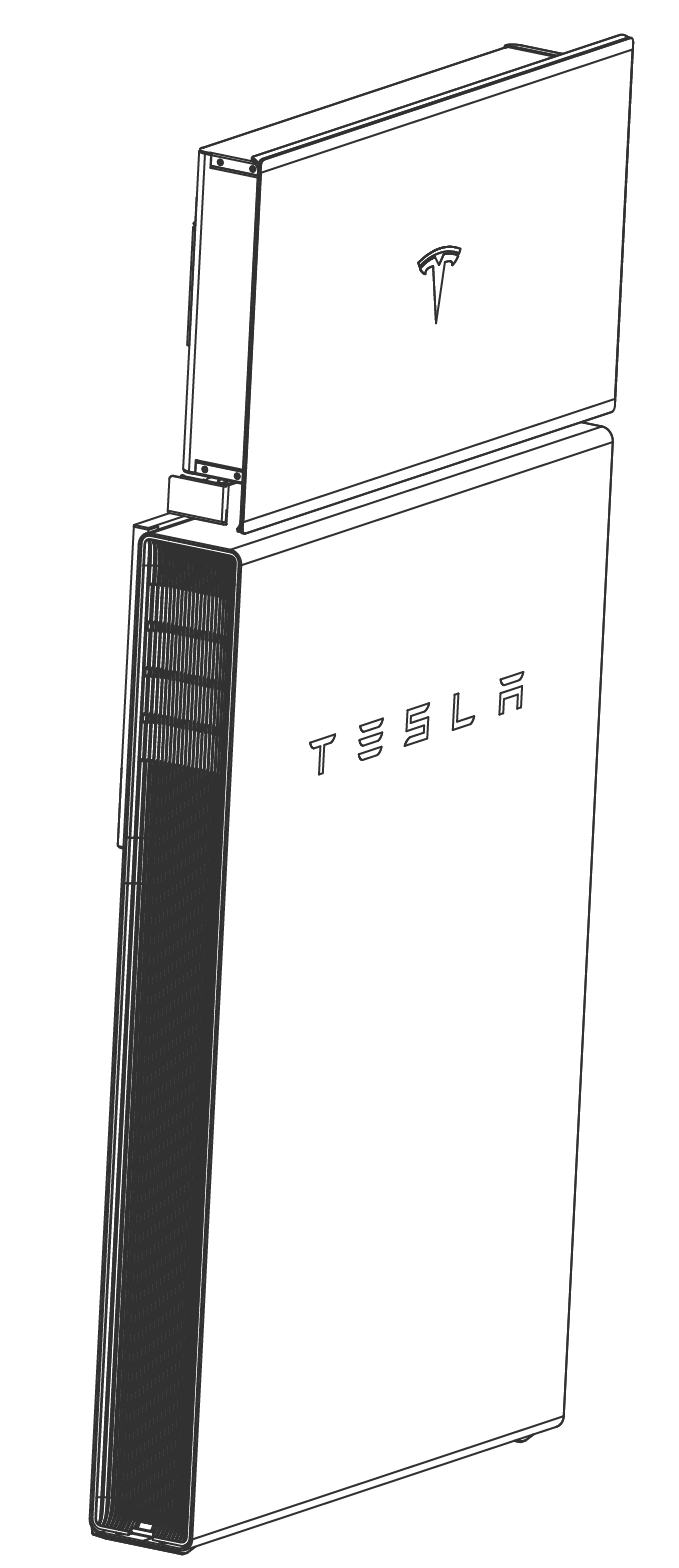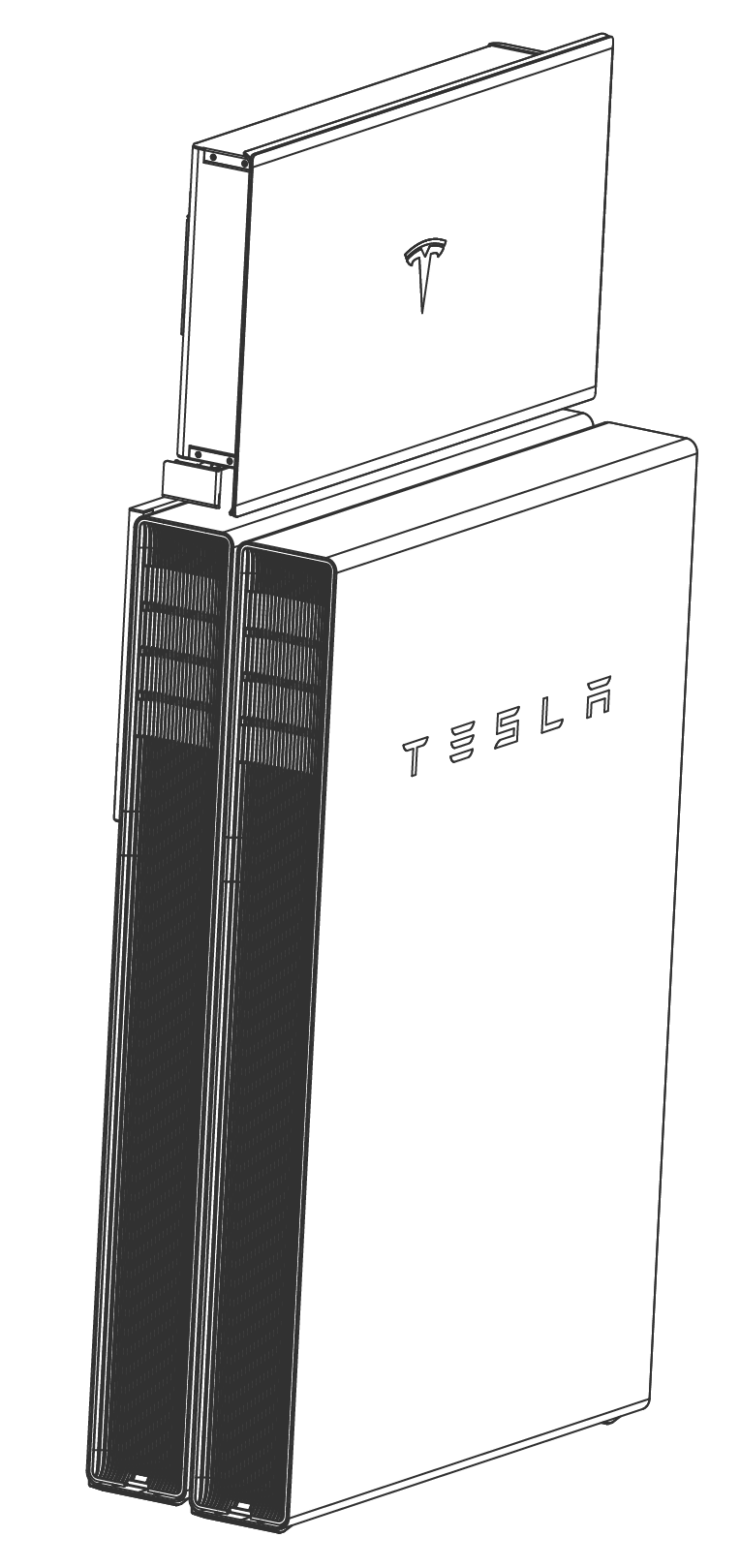Anchoring and Concrete Pad Details for Ground-mounting Powerwall+ on Poured Concrete with Steel Posts
A8
In this mounting configuration, a concrete pad is constructed with vertical steel posts attached directly to the concrete pad. Powerwall+ is mounted to the posts, allowing it to be vertically and laterally supported by the concrete pad.
Concrete Pad Sizes
The primary design constraint for mounting on a poured concrete pad with steel posts is the risk of wind blowing the Powerwall(s) and pad over. As indicated in the table below, the required thickness and width of the concrete pad depend on which type of units are installed on it and how many units are installed.
See Powerwall+ Anchoring Details for installation scenarios which require site-specific calculations.
A9 - Anchoring and Concrete Pad Details for Ground-mounting Powerwall+ on Poured Concrete with Steel Posts
Requirements for Poured Concrete Pad with Steel Posts
- Within the perimeter of the pad, excavate and remove all loose and organic material, compacting soil to a level surface. Embed the concrete in the soil per detail (below). Should AHJs require further embedment of footing, contractors shall consult a third party structural designer or other qualified person acceptable to the AHJ to abide by the requirements set by the AHJ. Snow regions are to be defined by site-specific design criteria of 10 psf ground snow or greater. Refer to detail for depth of compacted crushed, course stone base.
- Concrete used for pads shall have a minimum compressive strength of 3,000 PSI at 28 days. Work can begin 14 days after the pad is poured
- Concrete reinforcing shall
meet the temperature and shrinkage requirements of ACI 318
- #4 Rebars <=16 inch O.C. (both ways)
- ASTM A615 Grade 60 (FY = 60,000 PSI)
- Minimum 3 inch cover for concrete facing soil
- Posts shall be 2 inch SCH 40 steel pipes
- Each post is to be attached to the pad through a Hollaender pipe flange with (4) 3/8 inch Simpson Strong-Tie Titen HD concrete screws (ESR 2713) with minimum 2-½ inch embedment. An equivalent concrete anchor approved by the installing company's structural designer or other qualified person acceptable to the AHJ can be used with compliance letter
- All items to be cast in concrete, such as reinforcing steel, shall be securely and accurately positioned into the forms prior to placing the concrete
- Concrete anchors shall be installed with minimum 6 inch edge distance from all edges of the pad. Typical spacing between posts supporting the same Powerwall is 16 inches on center
- 1-5/8 inch struts and hardware shall be used to attach electrical equipment to posts; to attach the struts to the posts, use 5/16" diameter U-bolt with hex nuts and washers
- To attach the bracket to the struts, use at least four (one in each corner) 3/8 inch hex head screws with washers and strut nuts
A10 - Anchoring and Concrete Pad Details for Ground-mounting Powerwall+ on Poured Concrete with Steel Posts

A11 - Anchoring and Concrete Pad Details for Ground-mounting Powerwall+ on Poured Concrete with Steel Posts


